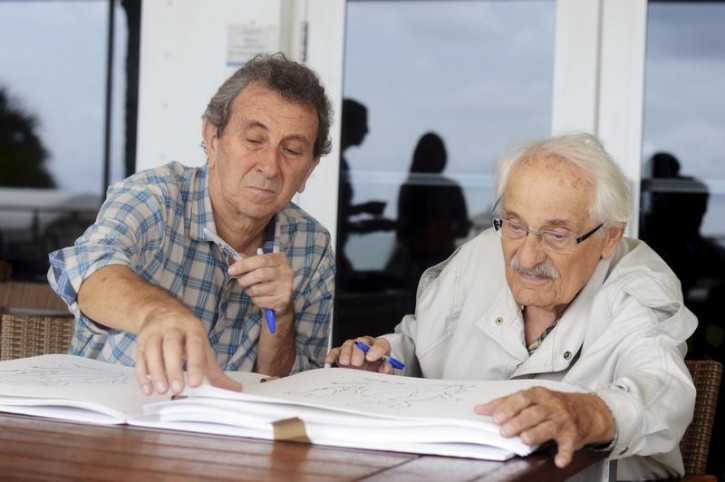 Miami – Samuel Willenberg, the last known living survivor of the notorious Nazi extermination camp Treblinka is nearing the end of a life’s mission to tell of the horrors that he saw there.
Miami – Samuel Willenberg, the last known living survivor of the notorious Nazi extermination camp Treblinka is nearing the end of a life’s mission to tell of the horrors that he saw there.
Subscribe to our Daily Roundup Email
Now 92, his remarkable story, featured in a documentary film produced by Miami public TV channel WLRN, is spurring efforts to fulfill that mission by building an educational museum at the camp’s site in a remote pine forest in eastern Poland.
“Treblinka’s Last Witness,” airing on Tuesday, tells the story of how Willenberg, a Polish Jew, became a forced laborer at Treblinka where his two sisters were among the 900,000 Jews sent to their deaths. He later escaped during a camp revolt, one of barely 100 Jews to survive the place.
A history professor he met in the camp told him: “You’re not like other Jews, you have blonde hair, you know how to survive,” Willenberg recalled in an interview during a visit to Miami for a premiere of the film last week before a packed audience, many of them relatives of Holocaust victims.
“You have to run away from this,” the professor told him. “It will be your mission to tell people about what happened here.”
Willenberg, who after World War Two moved to Israel, married and worked for 40 years as a civil servant, has dedicated his retirement to memorializing what happened by creating a series of 15 haunting bronze sculptures, each capturing a scene from the camp, as well as leading educational visits there.
On Tuesday Willenberg will also be a guest of honor alongside Israeli President Reuven Rivlin at the opening of the main exhibition at Warsaw’s newly built Museum of the History of Polish Jews, a project that sets out to recall not just how Jews in Poland died, but how they lived.
Of Poland’s pre-war population of 3.5 million Jews, only a few tens of thousands remain, their place in the nation’s history and culture having been largely eradicated.
Only recently has Poland started to re-connect with its role in history as a home for 1,000 years to one of the world’s biggest Jewish communities.
LARGELY UNTOUCHED
Polish Jews have also played a major role in American history, with an estimated 80 percent of U.S. Jews able to trace their roots back to ancestors in Poland.
Unlike other Nazi concentration camps such as Auschwitz, Dachau and Buchenwald, where efforts have been made to educate visitors, the Treblinka site has been left largely untouched after the Nazis demolished it near the end of the war in a desperate effort to cover up their deeds.
All that exists there today are some railroad ties leading up to the remains of a station platform set among large stones.
“It’s a very moving place, but there’s nothing to tell the story,” said the film’s British-born director, Alan Tomlinson.
“I have heard a lot of stories in my career, but no-one has ever told me a story like Samuel’s,” Tomlinson, 66, told the audience at the premiere. “And Samuel is such a great story-teller,” he added, crediting Willenberg’s lucid passion and vivid memory with providing the film’s powerful impact.
Experts say that much more could be done at the current site to help visitors understand the monstrosity of Treblinka. Historians have called it the Nazis’ most efficient death camp which, operating like a factory assembly-line, they killed almost 1 million people in barely 13 months in 1942-1943.
“It’s an intuitive, emotional understanding that concentrates beautifully the sense of loss, but it’s wordless and doesn’t articulate what was lost there,” said Holocaust scholar Michael Berenbaum.
“You experience the presence of absence and the absence of presence,” he added. “Treblinka is a place where a crime is not manifest.”
Berenbaum said an anonymous donor has already committed $1 million to the museum project. During his Miami visit Willenberg met with a number of wealthy Polish immigrants who pledged to see the museum built.
“Thanks to Samuel’s extraordinary persistence, the project now has real life,” said Tomlinson.
After the film airs on Oct. 28 on WLRN in south Florida, it will be distributed nationally through the PBS network.

May he live till 120 in good health and we should all see his dicumentary